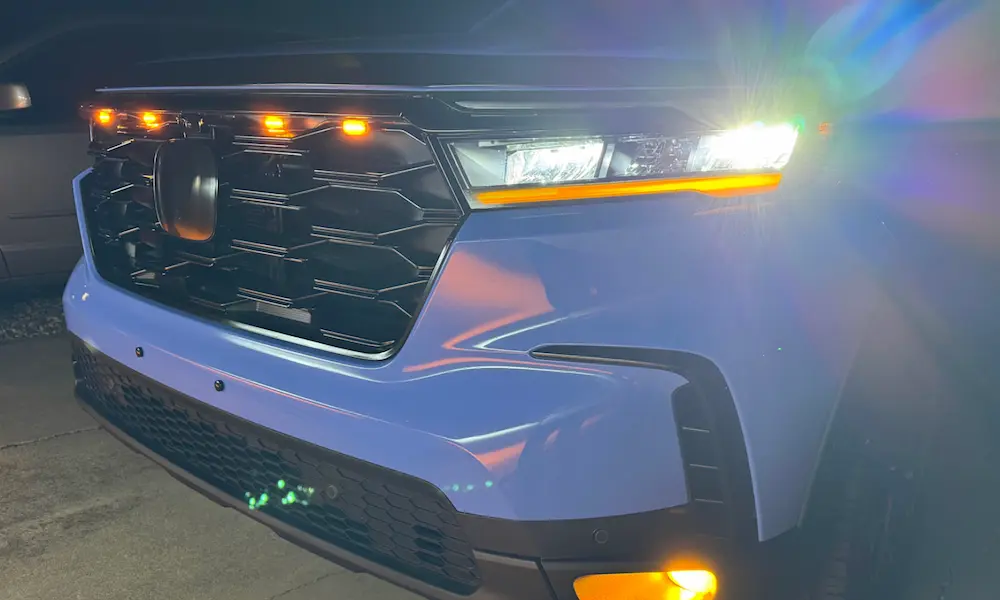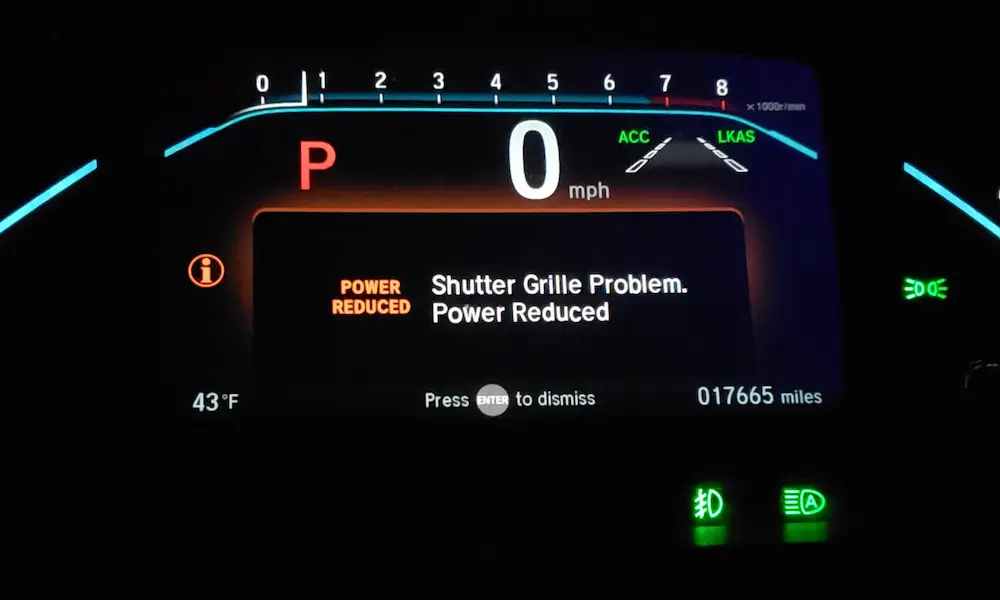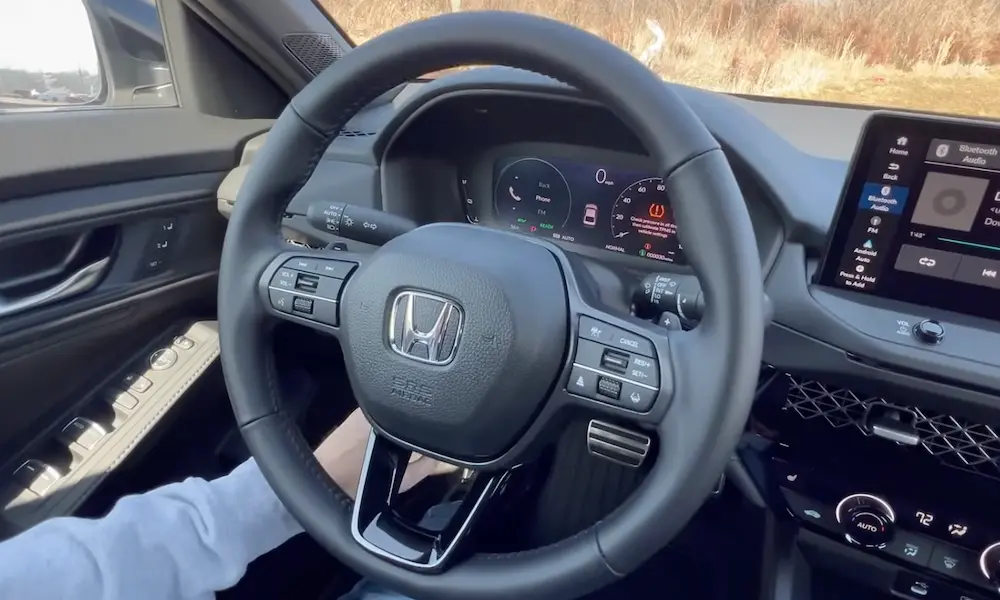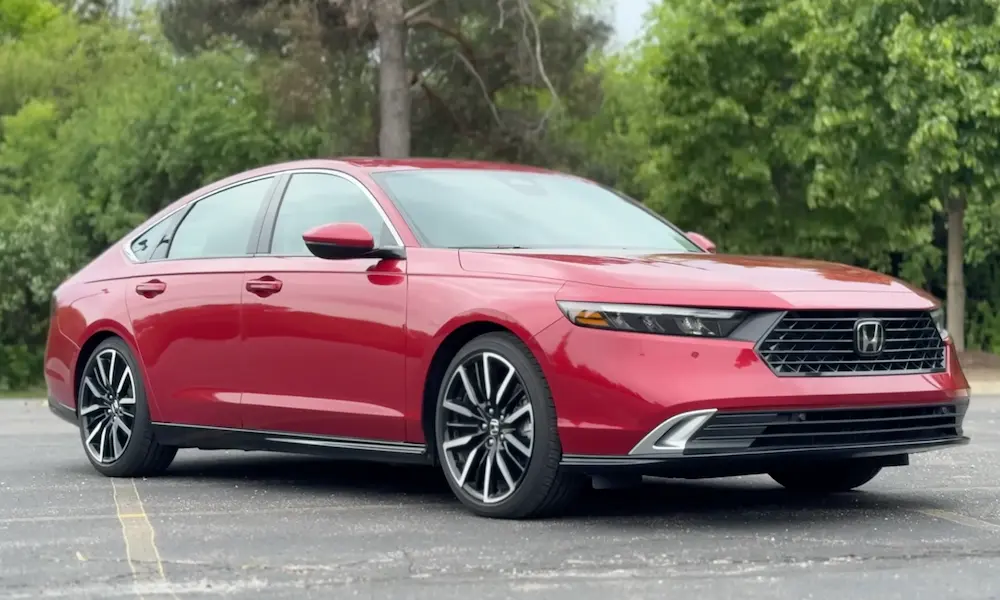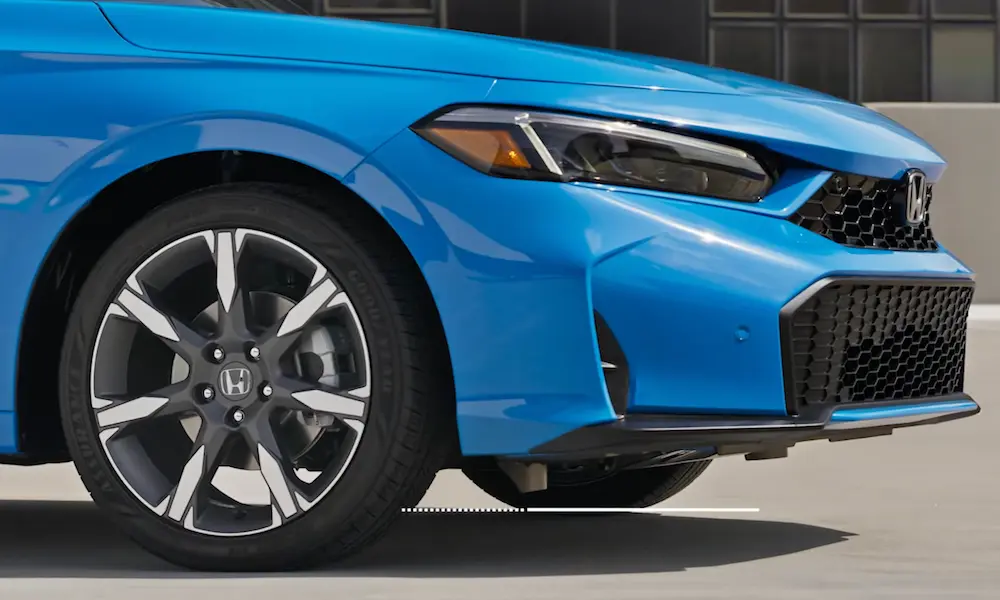Thinking about buying a Honda Odyssey or already own one? You might’ve heard whispers about transmission troubles with these popular minivans. While the Odyssey has earned a reputation as a reliable family hauler, certain model years have experienced significant transmission issues that can lead to costly repairs. Let’s dive into everything you need to know about Honda Odyssey transmission problems, from the worst offenders to the most reliable options.
The Second Generation Nightmare (1999-2004)
The second-generation Honda Odyssey represents some of the darkest days in Honda’s transmission history. These models suffered from widespread transmission failures that often required complete replacement.
The 2002 Model: Avoid at All Costs
The 2002 Odyssey stands out as particularly notorious, with transmission failures commonly occurring around 100,000 miles – much earlier than expected for a Honda vehicle. This is a model year to “avoid like the plague.”
What Goes Wrong?
The primary issue with these transmissions was overheating. The 4-speed automatic transmission simply wasn’t designed to handle the Odyssey’s weight and power requirements. This led to:
- Transmission fluid overheating due to inadequate cooling
- Poor lubrication of internal components
- Metal shavings contaminating the transmission fluid
- Clogged fluid lines
- Complete transmission failure
Honda eventually acknowledged these problems through recalls and service campaigns. In April 2004, Honda issued a stop-sales order for 2002 Odysseys until they could install an “oil jet kit” to provide better lubrication to the second gear area. Unfortunately, for many owners, this fix came too late.
Repair Costs and Warning Signs
If you own a second-generation Odyssey, be prepared for significant repair costs if transmission problems develop:
- Complete transmission replacement: $3,000-$4,000
- Rebuilding the transmission: $2,500-$3,500
Warning signs include:
- Delayed engagement when shifting from park to drive
- Slipping between gears
- Shuddering or jerking during acceleration
- Unusual noises like whining or grinding
Third Generation Issues (2005-2010)
The third-generation Odyssey introduced a redesigned 5-speed automatic transmission that was supposed to address earlier problems. Unfortunately, many issues persisted, particularly in early model years.
The 2005 Model: Still Problematic
The 2005 Odyssey became notorious for two major problems: transmission failures and excessive oil consumption. Many owners reported their vehicles consuming up to a quart of oil every 1,000 miles due to poorly designed piston rings. This combination of engine and transmission issues created a perfect storm of reliability problems.
Transmission Problems in This Generation
The 5-speed transmission in these models suffered from several issues:
- Torque converter failures
- Solenoid malfunctions
- Electronic control unit glitches
- Hard shifting between gears
According to forums and owner reports, transmission failures typically occurred between 90,000-120,000 miles in these models. Replacement costs increased to $4,000-$5,000 during this generation.
Improvements in Later Third-Gen Models
It’s worth noting that the later years of the third generation (2009-2010) showed marked improvement in reliability. By this time, Honda had refined the 5-speed transmission design and addressed many manufacturing issues that plagued earlier models.
Fourth Generation Redemption (2011-2017)
The fourth generation Honda Odyssey represents a turning point in transmission reliability. The introduction of a new 6-speed automatic transmission marked the beginning of much more dependable operation.
The Best Years: 2015-2017
Most reliability experts consider the 2015-2017 model years as among the best Odyssey years ever produced. These vehicles benefited from years of refinement to the 6-speed transmission design and represented the peak of Honda’s minivan engineering before the controversial transition to new transmission technology.
The Torque Converter Judder Issue
Despite overall improvement, the 2014-2017 models experienced a specific problem: torque converter judder. This issue was characterized by a vibrating sensation felt between 20-60 mph during light acceleration.
This problem was common enough that Honda issued Technical Service Bulletin (TSB) A17-043, acknowledging the issue and providing a solution. According to transmission specialists, the judder was primarily caused by:
- Degraded transmission fluid
- Improper calibration of the torque converter lockup clutch
Honda’s recommended fix involved performing three consecutive drain-and-fill procedures to completely refresh the transmission fluid, followed by a software update to recalibrate the transmission control module. This fix typically cost $400-$600 when performed at dealerships.
Fifth Generation Mixed Results (2018-Present)
The fifth generation Honda Odyssey introduced significant changes that created new transmission challenges, particularly in the earliest model years.
The ZF 9-Speed Disaster (2018-2019)
The 2018-2019 Honda Odyssey models equipped with the ZF 9HP 9-speed automatic transmission experienced severe drivability issues that resulted in numerous customer complaints and class-action lawsuits. Problems included:
- Rough shifting
- Delayed engagement
- Harsh acceleration
- Sudden loss of power
- Safety concerns while merging or changing lanes
One dealership reported seeing at least 30 Odysseys with similar transmission issues, suggesting the problem was widespread rather than isolated incidents.
Root Causes of ZF 9-Speed Problems
The root cause was identified as a programming defect in the transmission control software. The ZF 9HP transmission’s complex design, which uses software-controlled dog clutches borrowed from manual transmission technology, proved incompatible with Honda’s calibration approach.
This software issue caused the transmission control module to become overly sensitive to sensor variations, resulting in mistimed gear shifts and the drivability problems owners experienced.
Astronomical Repair Costs
Repair costs for 2018-2019 transmission problems have been exceptionally high:
- Complete transmission replacements: $7,000-$9,200
- Transmission rebuilds: $4,000-$5,800
These high costs reflect both the complexity of the ZF 9HP unit and the limited availability of repair parts and expertise.
Recovery with 10-Speed Technology (2020+)
Honda learned from the ZF 9-speed disaster and made significant improvements starting with the 2020 model year. The introduction of Honda’s own 10-speed automatic transmission marked a return to reliability. The 2020-2022 model years have shown dramatically improved reliability compared to their immediate predecessors.
The 10-speed transmission offers smoother operation and better durability than the problematic 9-speed unit it replaced. Consumer reports and owner feedback indicate that Honda successfully addressed the programming and calibration issues that plagued the 2018-2019 models.
VCM Issues: A Related Concern
Beyond direct transmission problems, fourth and fifth-generation Odysseys (2008-2022) are equipped with Honda’s Variable Cylinder Management (VCM) system, which can cause additional reliability concerns.
How VCM Affects Your Transmission
VCM deactivates cylinders during light-load conditions to improve fuel economy, but this system can lead to:
- Premature piston ring wear
- Oil consumption
- Engine vibration
- Increased stress on transmission mounts
According to enthusiast forums, these VCM-related problems can indirectly affect transmission performance by causing rough engine operation that stresses transmission mounts and control systems.
Many Honda enthusiasts recommend installing a VCM disable device (such as the S-VCM controller) to prevent these issues. These devices cost approximately $200-$300 and can prevent expensive engine repairs.
Preventative Maintenance: Your Best Defense
Proper transmission maintenance is critical for Honda Odyssey longevity, regardless of the generation.
Fluid Change Intervals
Honda recommends transmission fluid changes every 30,000 miles for most driving conditions, though many experts suggest more frequent intervals:
| Generation | Recommended Change Interval | Type of Service |
|---|---|---|
| 2nd Gen (1999-2004) | Every 15,000-30,000 miles | Drain and fill |
| 3rd Gen (2005-2010) | Every 30,000 miles | Drain and fill |
| 4th Gen (2011-2017) | Every 30,000 miles | Triple drain and fill |
| 5th Gen (2018+) | Every 30,000 miles | Triple drain and fill |
Drain-and-Fill vs. Transmission Flush
For fourth and fifth-generation models, regular drain-and-fill procedures every 15,000-30,000 miles can prevent many transmission problems. A single drain-and-fill typically replaces about one-third of the total transmission fluid and costs $150-$250 when performed at independent shops.
Importantly, transmission specialists advise that transmission flushes should be avoided in favor of multiple drain-and-fill procedures. High-pressure flushing can push debris into sensitive valve bodies and cause additional problems, particularly in transmissions with existing wear.
Cost Analysis: Repair or Replace?
Transmission repair costs vary significantly by generation and problem severity:
- Second/Third Generation (1999-2010): $3,000-$5,000 for rebuilds or replacements
- Fourth Generation (2011-2017): $2,000-$4,000 for torque converter issues, $4,000-$6,000 for major repairs
- Fifth Generation ZF 9-Speed (2018-2019): $5,000-$9,200 for replacements, $4,000-$5,800 for rebuilds
- Fifth Generation 10-Speed (2020+): Limited data, but early indications suggest $3,000-$5,000 range
Given current used vehicle prices, transmission repairs can often be economically justified if the rest of the vehicle is in good condition. However, owners of problematic years like 2002-2003 or 2018-2019 should carefully consider repair costs versus vehicle replacement.
Best and Worst Years for Honda Odyssey Transmissions
Based on comprehensive analysis of reliability data, owner reports, and repair statistics, here’s a quick reference guide to the best and worst Honda Odyssey model years regarding transmission reliability:
Worst Years to Avoid:
- 2002: Highest failure rate of any Odyssey year
- 2001-2003: Persistent transmission failures
- 2005: Transmission issues combined with oil consumption
- 2018-2019: Problematic ZF 9-speed transmission
Best Years to Consider:
- 2009-2010: Improved third-generation models
- 2013: Reliable fourth-generation model
- 2015-2017: Most reliable fourth-generation models with refined transmission
- 2020+: New 10-speed transmission with improved reliability
Warning Signs of Transmission Problems
Be alert for these early warning signs that your Honda Odyssey may be developing transmission problems:
- Delayed engagement when shifting from park to drive
- Harsh or abrupt shifting between gears
- Slipping sensation where engine RPMs rise but speed doesn’t increase
- Shuddering or vibration during acceleration
- Burning smell from transmission area
- Transmission fluid leaks (red/brown fluid under vehicle)
- Check engine light with transmission-related codes
- Strange noises (whining, grinding, clunking) during shifts
Early intervention at the first sign of these symptoms can often prevent catastrophic failure and reduce repair costs.
Making Your Honda Odyssey Transmission Last
If you own a Honda Odyssey or are considering purchasing one, these strategies will help maximize transmission life:
- Follow a strict maintenance schedule with regular fluid changes
- Use only genuine Honda ATF DW-1 transmission fluid
- Consider installing a transmission cooler for older generations
- Drive gently, especially when the vehicle is cold
- Allow the transmission to fully engage before accelerating from a stop
- Consider a VCM disabler for 2008+ models to reduce stress on the powertrain
- Address minor transmission issues immediately before they become major problems
With proper care and maintenance, even Odyssey models from less reliable years can provide many miles of service. The key is being proactive about maintenance and addressing small issues before they become catastrophic failures.
The Honda Odyssey remains one of the most popular minivans on the market, and with good reason. When you choose the right model year and maintain it properly, it can be an excellent family vehicle that provides years of reliable service. Just be sure to avoid the problematic model years highlighted in this guide.


